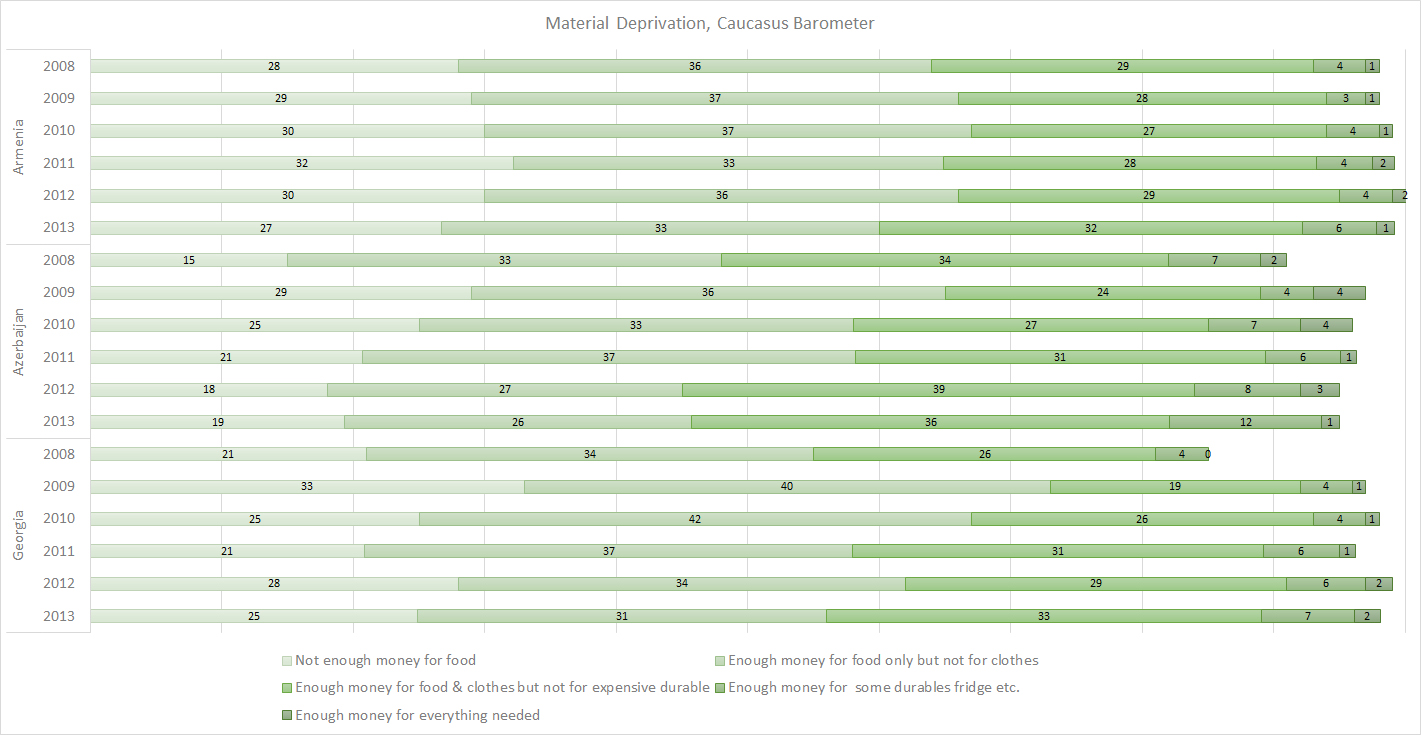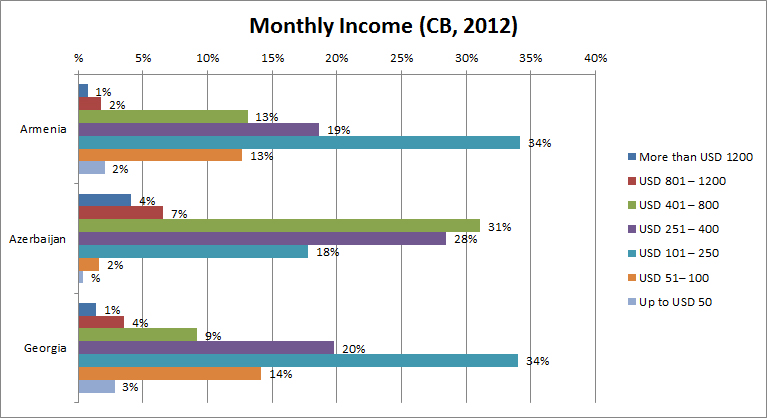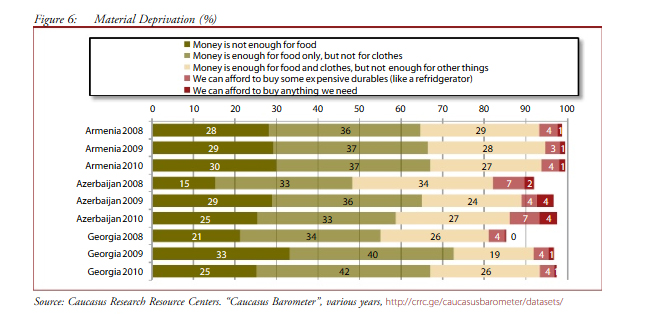Material Deprivation 2013 update
Material deprivation
Although many studies use income as a single indicator of socioeconomic status, certainly income is not a complete or direct measure of total economic wellbeing (Falkingham, 1999; Ringen, 1998). We use a consensual poverty measure, where the greater the number of consumable items absent, the greater the degree of material deprivation (Demirchyan & Thompson, 2008; Menchini & Redmond, 2009; Nolan & Whelan, 1996; for an extensive review, see Ouellette, Burstein, Long, & Beecroft, 2004), or what Boarini and Mira (2006) call objective satisfaction of basic needs. These have been shown to be most appropriate in the post-Soviet context (Falkingham, 1999; Kandiyoti, 1999; Rose & Mcallister, 1996), as income is low, irregular, and often not official. The scale used here (described by Rose, 2002) asked “what phrase best describes your family’s financial situation” and provided five choices.
And here’s some comparison over time (not comparing means, just giving frequencies.





